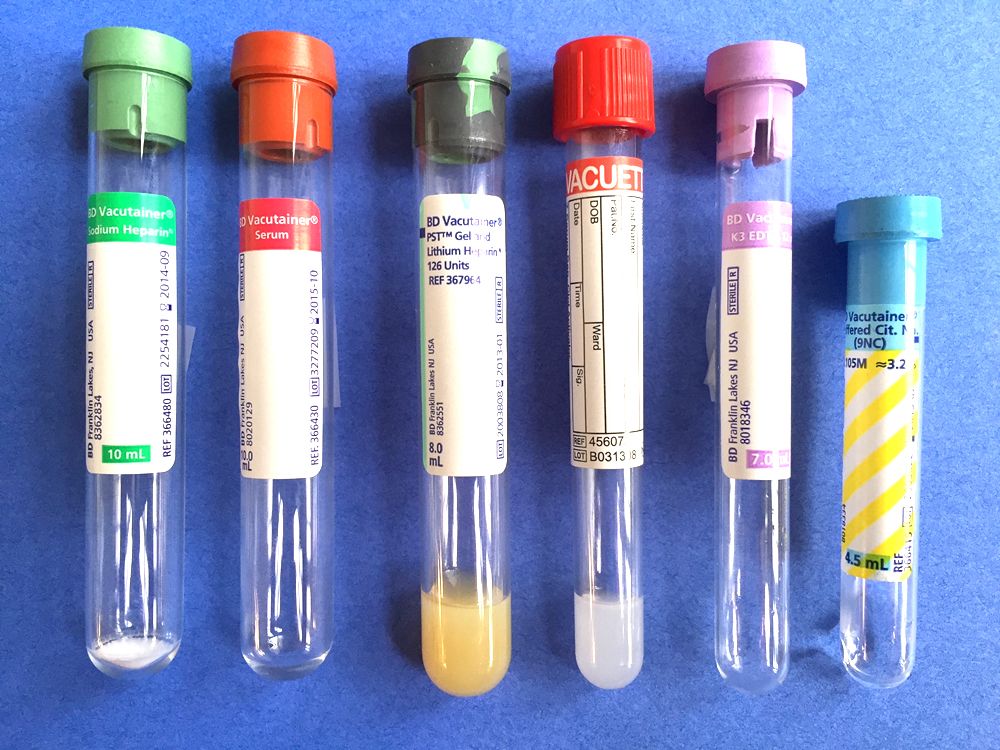Introduction
Blood tests are an important diagnostic tool for veterinarians to assess a dog’s overall health and identify any underlying conditions or diseases. A routine blood test, sometimes called a blood panel or blood profile, can provide information about many aspects of a dog’s health and function. Blood tests allow veterinarians to examine electrolyte levels, enzymes, proteins, blood cells, oxygen carrying capacity, immune response, and organ function in a dog.
There are many different types of blood tests that can be run. Some of the most common include a complete blood count (CBC), chemistry panel, thyroid panel, lipid panel, urinalysis, coagulation tests, and allergy testing. The results from these tests give veterinarians a snapshot into a dog’s health status. They provide quantitative data to help diagnose issues like anemia, infection, diabetes, kidney disease, liver disease, cancer, electrolyte abnormalities, and more. Blood tests are an invaluable tool that allow for earlier detection of illness and monitoring of disease progression in dogs.
Complete Blood Count
A complete blood count (CBC) is one of the most common tests that veterinarians recommend for dogs. It measures the numbers and types of cells in a dog’s blood. A CBC provides important information about a dog’s overall health status and can help detect inflammation, infection, anemia, bleeding disorders, and diseases affecting blood cell production.

A CBC typically includes the following components:
- Red blood cell (RBC) count – measures the number of red blood cells, which carry oxygen throughout the body
- Hemoglobin – measures the amount of hemoglobin, the protein in red blood cells that carries oxygen
- Hematocrit – measures the percentage of red blood cells in the blood
- White blood cell (WBC) count – measures the number of white blood cells, which fight infection
- Platelet count – measures cell fragments that help blood clot
Abnormal CBC results may indicate anemia, bleeding disorders, inflammation, infection, cancer, or other diseases. Doctors review the results of each component together to get an overall assessment of a dog’s health.
See this source for more details on what’s included in a CBC for dogs: https://vcahospitals.com/know-your-pet/complete-blood-count
Chemistry Panel
The chemistry panel is a group of tests that evaluates organ function, electrolyte status, and protein levels through analysis of chemicals and enzymes in the blood (https://www.vetstreet.com/care/cbc-and-chemistry-profile). It provides important information about a dog’s overall health status.

Tests included in a routine chemistry panel include:
- Kidney tests – BUN and creatinine levels indicate kidney function and ability to filter blood.
- Liver tests – ALT, AST, ALP, GGT, and bilirubin levels signify liver health and function.
- Blood sugar test – Glucose level screens for diabetes or other issues with sugar regulation.
- Protein tests – Albumin and globulin levels evaluate hydration and inflammation.
- Electrolytes – Sodium, potassium, chloride, and calcium levels assess fluid, acid-base, and mineral balance.
Veterinarians carefully analyze all components together to diagnose conditions like kidney disease, liver disease, diabetes, infections, cancer, and electrolyte abnormalities (https://www.petmd.com/dog/general-health/evr_dg_reading_the_blood_chemistry_panel). The chemistry panel provides key insights into a dog’s health.
Thyroid Panel
A thyroid panel is commonly performed in dogs to test the levels of thyroid hormones. The main hormones tested are T3 (triiodothyronine), T4 (thyroxine), and TSH (thyroid stimulating hormone).

T4 is the main hormone secreted by the thyroid gland. Low levels of T4 indicate hypothyroidism, which is one of the most common endocrine diseases in dogs. T3 is the active form of the hormone that affects the body’s metabolism. The TSH level indicates how much TSH the pituitary gland is releasing, which signals the thyroid to produce more hormone. High TSH levels indicate the thyroid gland is not responding appropriately.
According to the Cornell University College of Veterinary Medicine, testing T4, T3 and TSH provides an accurate assessment of thyroid function (Source). The typical tests included in a canine thyroid panel are:
- Total T4 (TT4)
- Free T4 (fT4)
- Total T3 (TT3)
- Free T3 (fT3)
- TSH
Measuring both total and free levels of T4 and T3 hormones helps determine if low hormone levels are due to decreased production by the thyroid gland or related to other binding proteins in the bloodstream. The optimal approach is to test TT4 and fT4 along with TSH levels (Source).
Lipid Panel
A lipid panel is a group of tests that measure fats and cholesterol in your dog’s blood. This panel screens for potential issues like pancreatitis, liver disease, Cushing’s disease, hypothyroidism, diabetes and high cholesterol. The most common tests included are:
- Cholesterol – Measures total cholesterol levels.
- Triglycerides – Evaluates levels of specific fats that travel in your dog’s blood.
- High-density lipoproteins (HDLs) – Measures “good” cholesterol levels.
- Low-density lipoproteins (LDLs) – Assesses “bad” cholesterol levels.
High cholesterol can indicate hypothyroidism, Cushing’s disease, diabetes, pancreatitis, and other conditions. Elevated triglycerides may be due to pancreatitis, hypothyroidism, diabetes, or high dietary fat. The lipid panel helps vets assess your dog’s overall health and screen for a variety of diseases.[1]
Urinalysis
A urinalysis is a routine test that analyzes the chemical composition of a dog’s urine. It assesses the health and function of the kidneys and urinary tract by looking for abnormalities. There are two main parts to a canine urinalysis: a physical exam and a chemical exam.

The physical exam checks the urine’s color, clarity, and concentration. Normal dog urine should be clear to pale yellow. Cloudy or dark urine could indicate disease. The chemical exam uses dipsticks and chemical reagents to detect levels of various substances like protein, glucose, ketones, and blood. Urinalysis – VCA Animal Hospitals For example, excess protein suggests kidney damage, while glucose may be a sign of diabetes. The presence of blood cells, hemoglobin, or myoglobin points to urinary tract injury or infection.
In addition to the dipstick test, a microscopic exam of the urine sediment can identify cells, crystals, casts, and bacteria. Crystals could mean bladder stones, while bacteria and white blood cells often indicate a urinary tract infection. Urinalysis in dog and cat: A review – PMC
A urinalysis is an important baseline test for kidney function and catching urinary tract infections early. It’s recommended annually for healthy dogs and more frequently for those at risk of kidney disease. Everything You Always Wanted to Know About Your Pet’s Urine While a urinalysis isn’t overly expensive, an abnormal result warrants follow-up to determine the underlying cause.
Coagulation Tests
Coagulation tests evaluate the body’s ability to form blood clots and stop bleeding. They assess the clotting factors in a dog’s blood. Some common coagulation tests include:
Prothrombin Time (PT) – This test measures the time it takes for blood to clot. It evaluates the extrinsic clotting pathway. PT specifically tests factors I, II, V, VII, and X. The normal PT range for dogs is 6-8 seconds. An increased PT could indicate vitamin K deficiency, liver disease, or rodenticide toxicity.
Activated Partial Thromboplastin Time (aPTT) – The aPTT test assesses the intrinsic clotting factors VIII, IX, XI, and XII. It determines the time for a clot to form after activating the intrinsic pathway. Normal aPTT in dogs is 16-25 seconds. Prolonged aPTT can signify hemophilia, von Willebrand disease, liver disease, or heparin therapy.
Fibrinogen Level – This helps assess the final stages of the clotting process. Low fibrinogen often correlates with liver disease or DIC. Normal range is 100-300 mg/dL.
D-dimer – A breakdown product of fibrin indicating clot dissolution. Elevated D-dimers may signal thrombosis or DIC.
Thromboelastography (TEG) – This test gives a global assessment of coagulation by evaluating clot strength and stability. It is especially useful for detecting hypercoagulable states. TEG results can guide transfusion therapy.
Sources:
https://vcahospitals.com/know-your-pet/coagulation-tests
https://eclinpath.com/hemostasis/tests/screening-coagulation-assays/
Allergy Testing
Allergy testing for dogs can help identify substances that trigger allergic reactions. There are two main types of allergy tests:
Blood Tests
Blood tests like the radioallergosorbent test (RAST) analyze a dog’s blood sample for IgE antibodies to potential allergens like foods, pollens, molds, etc. The RAST test is considered very accurate but doesn’t test reactions to insect stings or medications (VCA Hospitals).
Blood tests can be performed by a veterinarian and samples sent to a lab for analysis. Multiple allergens can be tested from one blood sample. However, blood tests don’t assess reactions to inhaled allergens as well as skin tests (Dispomed).
Skin Tests
With skin testing, potential allergens are injected under the skin and any reaction at the injection site is measured. Skin tests can assess a wider variety of allergens including foods, inhaled particles like pollen, and insect stings (UWV). However, skin testing requires sedation and takes longer than a blood draw.
Overall allergy testing can help identify substances causing your dog’s symptoms so trigger allergens can be avoided or managed through treatments like immunotherapy.
Other Tests
In addition to routine blood work like the CBC and chemistry panel, veterinarians may recommend additional blood tests to check for specific conditions or gain more insight into a dog’s health. Some other common blood tests include:
- Tests for infections – A veterinarian may order a blood culture to check for bacterial infections or test for tick-borne diseases like Lyme disease, ehrlichiosis, or anaplasmosis. These help diagnose the cause of fevers, lethargy, or other systemic signs of illness.
- Cancer markers – Tests like the Heska Cancer Profile check for elevated levels of enzymes or markers associated with certain cancers, which can aid early detection and diagnosis.
- Hormone levels – Thyroid levels, adrenal hormones, and reproductive hormones can be measured to evaluate endocrine diseases.
- Allergy testing – Both blood and intradermal skin testing can help identify environmental, food, or other allergies contributing to itchy skin or ear infections.
- Coagulation testing – Clotting times help diagnose clotting disorders.
- Cardiac tests – Tests like NT-proBNP and troponin levels evaluate heart disease.
While some of these tests may be recommended only as follow-ups to abnormal routine blood work, they provide veterinarians with additional valuable information to determine the cause of a dog’s illness and best course of treatment. As our understanding of veterinary medicine grows, new and improved blood tests continue to be developed to diagnose disease early and accurately.
Conclusion
In conclusion, there are a variety of important blood tests that veterinarians rely on to evaluate a dog’s health and diagnose medical conditions. The complete blood count provides information about red and white blood cells, platelets, and hemoglobin levels. The chemistry panel analyzes electrolytes, enzymes, proteins, kidney and liver function. The thyroid panel checks thyroid hormone levels, which regulate metabolism. The lipid panel evaluates cholesterol and triglycerides to assess cardiovascular health. Urinalysis examines urine for indicators of kidney function, urinary tract infections, and other conditions. Coagulation tests determine blood clotting ability. Allergy testing identifies immune reactions. Beyond these common tests, veterinarians may order specialized tests like hormone panels and cancer or genetic disease screening based on a dog’s specific symptoms and medical history. Overall, a dog’s blood work provides vets with crucial insights that allow early detection and proper treatment of many illnesses.